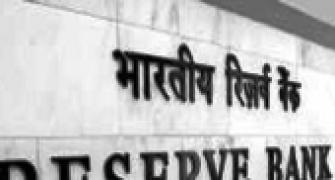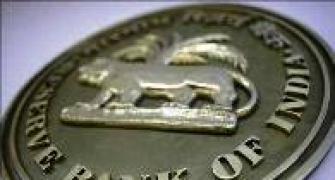The question of whether or not RBI should hike policy rates in its quarterly monetary policy review due on January 25 should have been answered rather forcefully by the inflation data for December. After showing tentative signs of moderation in October and November, wholesale price inflation shot up close to 8.5 per cent on the back of a spike in vegetable prices led by onions and tomatoes.
After showing tentative signs of moderation in October and November, wholesale price inflation shot up close to 8.5 per cent on the back of a spike in vegetable prices led by onions and tomatoes.
Even if these prices were to cool off a tad, the prospect of a hike in diesel prices looms on the horizon.
The chances of ending the current fiscal year at anywhere near the 5.5 per cent that RBI officially targets seem bleak indeed.
There is also a palpable sense of despair and desperation in government agencies over its inability to tame the price monster.
Thus, no agency that is even remotely associated with managing the price-line can afford to remain passive at this juncture. The central bank in its avatar as the principal inflation-fighter in the economy certainly cannot. A hike in policy rates thus seems inevitable.
However, another round of increases in interest rats is unlikely to bring the prices of food down in a hurry.
Supply is clearly short for a number of food items, particularly things like milk, fish, poultry and vegetables, and their prices have been rising steadily over the last two years.
This trend is unlikely to reverse unless there is a jump in farm productivity and a complete overhaul of their supply chain, and repeal of archaic marketing laws that impair competition in their supply.
This cannot happen overnight and households perhaps need to reconcile to the fact that their budgets will remain strained in the foreseeable future.
But this does not necessarily dilute the case for further monetary action. For one, the very stubbornness in food inflation suggests that rising demand is also playing a role in keeping prices elevated.
Besides, inflation expectations are running high and this itself is playing a role in keeping prices sticky. Finally, there is a risk of high food prices setting off second-round effects, particularly wage inflation that would feed into other sectors of the economy, transforming the rising food price into more broad inflation.
An increase in policy rates and its transmission to lending and borrowing rates can go a long way in addressing these issues.
The question then is: should RBI stick to its measured approach and push the reverse repo and repo rates up by a quarter of a percentage point or go the whole hog and hike by half a percentage point?
It might be tempting for the RBI governor to choose the latter and signal to the markets that he too packs a mean punch.
However, by doing that he might just end up "over-compensating" for the other imbalances in the system that play an equally important role in keeping prices high - excessively loose fiscal policy and the woeful state of agriculture that years of neglect has bred.
The result could be what economists term "hard landing" or a sharp slowdown in growth. Growth has incidentally started looking fragile again with the November industrial production index registering a growth of just 2.7 per cent.
The RBI governor has to keep the risk of pushing growth off a cliff in mind in deciding January's policy action. A quarter of a percentage point increase in rates should do the trick this time.










